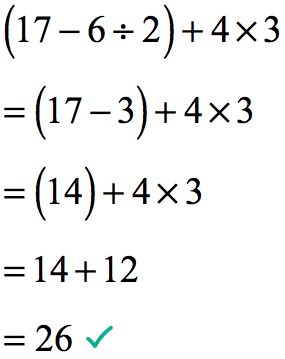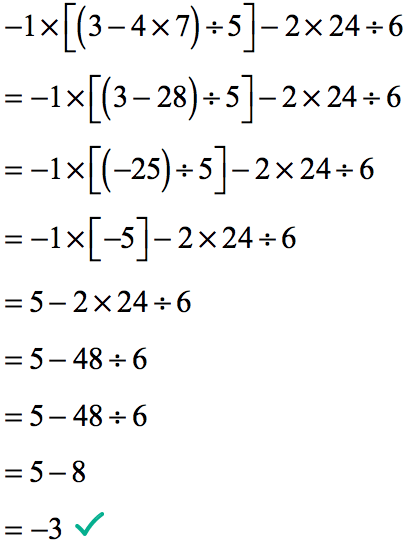7 (3 x 15) = (7 x 3) 15
Associative Property of Multiplication
Use the commutative property to write an equivalent expression:
2 + 7
7 + 2
What would your first step in solving this be?
7-24÷8X4+6
First divide -24/8
Use the associative property to determine if the equation below is equal or not equal:
(2+3)+9____ 2(3+2)
not equal
What is the Order of Operations?
PEDMAS-(Parentheses, Exponents, Multiplication/Division, Addition/Subtraction)
8 (5 +3)= 8 (3 + 5 )
Commutative Property of Addition
Use the commutative property to write an equivalent expression:
12 x 3
3 x 12
In what order would you solve this?
(17-6÷2) +4×3
First solve in the parenthesis- (divide, then subtract), then solve the multiplication of 4X3, then add the answers
Use the commutative property to determine if the equation below is equal or not equal:
13+(5x2) = 13+(2x5)
equal
Property which defines the rules for the ORDER of numbers when multiplying or adding:
Two expressions with the same value are called:
Equivalent Expressions
7 (4 + 5)= 7(4) + 7(5)
Distributive Property of addition
Use the associative property to write an equivalent expression:
5 (1x4)
(5x1) x4
Solve using order of Operations-


Use the associative property to fill the missing values. (____×3)×8=(___ ×3)×6
6(2) + 6(3)
Property which defines the rules for the ORDER of numbers when multiplying or adding:
Commutative property
2+(13+6)= (2+13)+6
Associative Property of Addition
Use the distributive property to write an equivalent expression:
5 (3+2)
5 (3) + 5 (2)
Solve using order of operations-


Find the product using the distributive property:
9(13)
9(13)= 9(10)+ 9(3)
90+27= 117
Property which defines a rule for multiplying a number by a sum:
Distributive Property
6(20+3)= 6(20) +6(3)
Distributive Property of
Which equation shows the commutative property of multiplication?
a. 6+2 = 2+6
b. 4+(2+8) = (4+2)+8
c. (12x9 )x2= 12x(9x2)
d. (3x4) x 10 = (4x3) x 10
d. (3x4) x 10 = (4x3) x 10
Solve using the order of operations

(22÷2-2X5)^2 +(4-6/6)^3
=(11-2•5)^2 +(4-1)^3
=(11-10)^2 +(4-1)
=(1)^2 + (3)^3
=1+9
=10
Use the associative property to fill the missing values. (____×3)×8=(___ ×3)×6
(6 X 3)X8= (8X3)X6
Property which defines a rule for the GROUPING of numbers when adding or multiplying:
Distributive